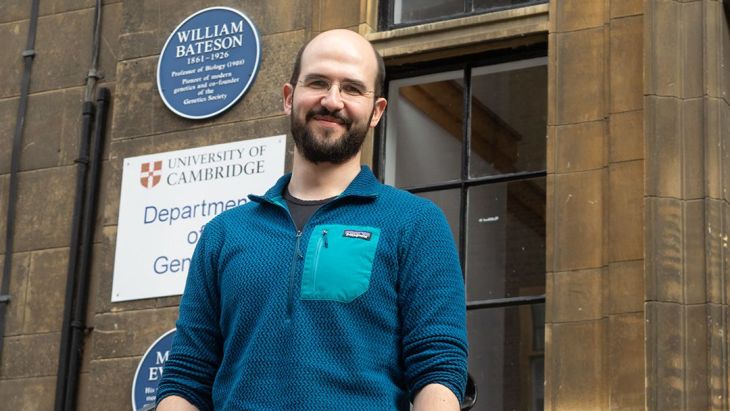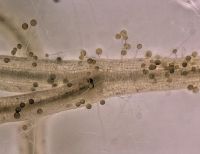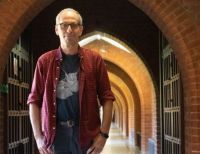Cagan is a rare triple appointment at Cambridge. As an Assistant Professor, he is shared between three departments: Genetics, Veterinary Medicine and Pathology. He works on the blossoming field of somatic evolutionary genomics.
Son of a thespian and a set designer, Cagan was originally set for art rather than science. He was drawn into science at Cambridge, after doing an undergraduate degree in Anthropology.
“I’ve always sketched, and kept doing it during my PhD. I got more into science illustration by going to conferences and sketching the speakers during their talks.
Cagan's illustration, accompanying his research paper, on the cover of Nature (21 April 2022)
Cagan's illustration, accompanying his research paper, on the cover of Nature (21 April 2022)
“There’s a lot of overlap in the creativity needed for arts and the work I do in science. Creativity is fundamental to the scientific process. Coming up with a hypothesis requires you to imagine a world that you can then test against reality.
“I wouldn’t be working on somatic evolution if I hadn’t been asked to illustrate a conference on the topic. It completely blew my mind.”
Mutating into the future
From the moment your first cell divides into two, you play host to slightly different genomes. Each cell’s genome copy is prone to errors: in the act of duplication, and the bruising experience of staying alive. As you age, time takes its toll and the rulebook gets corrupted. The discrepancy between all those genome versions gradually widens.
Mutations are what cause the copies of the genome we are born with to diverge. Most mutations have little or no effect on how our cells function. Some are harmful to their hosts. Cancer is a painful example of how somatic mutations can cause disease.
In crucial, rare cases, mutations can exhibit positive changes.
“Mutations are the raw material of evolution,” Cagan says. “Their variation is what gives life its diversity. I want to look at how mutations work – how that process varies across different species and cell types.”
Until recently, genetic variability on a cellular level was invisible to scientists. Instead, we studied population and species level genetics by focusing on the germline.
The germline is the collection of cells that develop into gametes (our sperm and egg cells). The germline’s hereditary material is immortal and handed down to future generations. This is in contrast to the somatic cells that form the building blocks of our bodies, and are not directly passed down to our children. In the last few years, technology has made it possible to see mutations on the somatic level. Scientists like Cagan can now detect mutations in just one cell in your body.
Previously, scientists considered errors in replication as the primary source of mutations. It now seems likely that most mutations come not from division, but from inaccurate repair of DNA damage. Our best guess is that every cell gets about 70,000 lesions to its genome per day. These can result from internal factors – the stress of chemical reactions happening inside the cell – or external ones – such as exposure to environmental pollutants.
“Every cell has machinery to repair this damage, but it doesn’t always work perfectly. Every now and then, damage is incorrectly repaired, and you get a mutation.
“We’re now learning about the mutation rates of different tissues. Your skin, for example, has a very high mutation rate – that’s because it’s exposed to UV radiation from the sun.
“Sperm and eggs also accumulate mutations, but at a dramatically lower rate.”
As carriers of the immortal germline, it makes evolutionary sense for the information in sperm and egg cells to be fiercely protected. Our bodies just need to last long enough to pass on this material to the next generation.
But how is this lower mutation rate achieved in sperm and egg cells?
“That’s the million-pound question,” Cagan smiles. “Do our bodies have the capacity to better protect certain cells from DNA damage? Or do these cells have vastly superior mechanisms to repair this damage? If so, could we harness this repair ability, and apply it to our bodies more widely?
“If we could, you could likely lower the rate of cancer and other illnesses. We could potentially even slow ageing itself.”
Cagan at the Department of Genetics
Cagan at the Department of Genetics
















